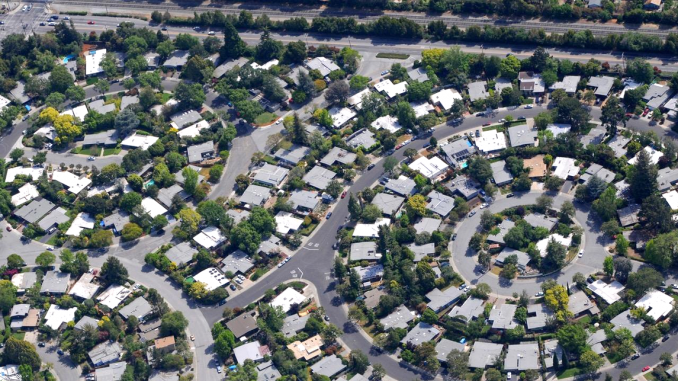
Correction: A comment attributed to Angie Evans was incorrect in an earlier version. It has been corrected in this version.
BY KYLE MARTIN
Daily Post Staff Writer
Palo Alto City Council voted last night (April 12) to put limits on its new Planned Home Zoning tool, which was created to promote more housing, in order to protect single-family home neighborhoods from higher density housing.
PHZ lets home developers negotiate deals with the city to build projects that exceed restrictions on height and density if the development includes 20% below-market apartments.
Council voted 5-2 on a motion from Vice Mayor Pat Burt to discourage PHZ projects in single-family neighborhoods, with council members Alison Cormack and Greg Tanaka dissenting.
Cormack said she was “disappointed to see that we’re going backward” when it came to encouraging more housing.
On the other hand, other council members such as Mayor Tom DuBois voted get rid of the ability of developers to exceed height limits in PHZ projects, making the new tool less attractive.
“I think one of the things that’s pretty clear is that if we maintain our height limit, we just won’t get new homes for people to live in,” Cormack said.
The motion also asked city planners to review whether the industrial area near Charleston and San Antonio roads, the Stanford Research Park and the Stanford Shopping Center would be appropriate for housing.
Council approved another motion that asks city planners to find way to allow churches and synagogues to build housing.
Burt said that PHZ was never designed for single-family neighborhoods. But he also said that some single-family zoned neighborhoods, known as R-1 in the zoning code, have grown in such a way that the city should reconsider whether that zoning still applies.
He added the city should consider legislation that would encourage mixed-use developments that are mostly housing. Burt said he favored this approach to combat the housing-jobs imbalance.
Burt said he also favored more granny units, known as accessory dwelling units or ADUs. Councilman Greer Stone agreed with Burt in supporting the increased production of granny units to help the city meet its state housing quota. Stone said he supported the rest of Burt’s changes to the PHZ process too.
“I think this process can bear fruit if we are smart in the revisions that we make,” Stone said. And he asked that the city find more federal and state funding for building housing.
Mayor DuBois said council should treat the PHZ policy as a “learning experiment,” and said council still needs to do more to improve the policy.
“We’re saying it’s short term. I’d like to see us start to refine. And I think that we do have some more learning to be done, but I think we should try to refine some of these parameters,” DuBois said. “And maybe the goal is to reduce these into clear zoning standards so that developers have predictability, neighbors have predictability and the process has predictability.”
Resident Anna Lembke supported the slow-growth side of council, which voted to limit PHZ zoning. She asked that council prohibit developers from using the PHZ process to upzone residential neighborhoods, saying “this is not about community, this is making sure that we still have backyards in College Terrace 20 years from now.”
“It’s also not about structural racism. This is really about preserving the integrity of walkable neighborhoods,” Lembke said. “This is about making sure that we preserve the public trust and that when people buy properties in Palo Alto, they know what they’re getting into when they sink their own personal wealth into that property. They can trust that they know what the future will hold.”
Ventura neighborhood resident Becky Sanders also asked council to use PHZ to encourage housing in commercial areas instead of single-family neighborhoods.
But others who spoke on this zoning discussion asked that council allow the PHZ process to remain an incentive for developers to propose housing projects anywhere in the city, such as single-family neighborhoods.
Resident Scott Oneil said the city should allow the PHZ to apply to single-family neighborhoods, saying the city otherwise “closes off a valuable tool” to produce housing as it works to meet housing quotas in the coming years.
And resident Angie Evans, representing the pro-housing advocacy group Palo Alto Forward, said council shouldn’t restrict the use of PHZ in single-family R-1 neighborhoods, saying the “bad faith” changes to the policy would be “wrong-headed and inappropriate.”
“Further, by limiting the ability to use this important tool across the city, Palo Alto is going to make it impossible to equitably zone for housing in every neighborhood,” Evans said.

